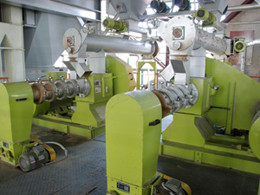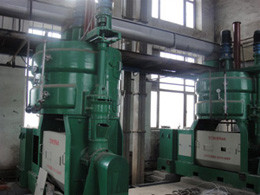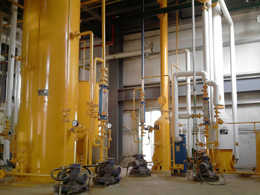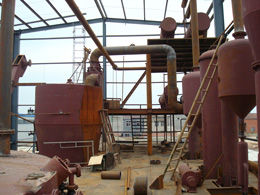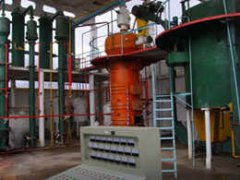Vegetable Oil Plant
Vegetable oils are recovered by grinding, cooking, expelling and pressing, or by solvent extraction of the raw materials. Below are the process of making vegetable oil by vegetable oil plant.
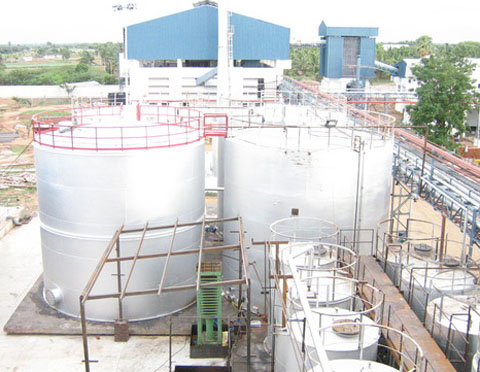
Process Steps of Vegetable Oil Plant
1. CRUDE OIL STORAGE - WITH FOOTS. (Foots are the solid fragments of crushed seeds that pass through the filter.) These tanks will be equipped with side entry mixers to keep the foots in suspension and ensure a uniform feed to down-stream equipment. Mixer selections are given in Table I. These tanks are often built with heating pipes. Agitation below these pipes will be reduced, resulting in solids settling and the need for periodic cleaning.
2. The next process step is called edible oil refinery. BATCH REFINING the oil is treated with a 20% caustic solution to react the fatty acids. This results in the formation of soft soaps which are decanted off. Too much agitation will emulsify the mix resulting in long separation times. Use gear drive portable mixers at 1
HP/1000 gallons, or small top entry mixers at 0,6 HP/1000 gallons.Some refining is done in continuous "packaged" systems built by suppliers of continuous separations equipment.
3. The oil now goes to REFINED OIL STORAGE. These tanks provide surge capacity in the system. Lower power levels are used than for crude oil with foots. See Table I for recommendations.
4. Oils are sometimes blended before further processing. BLENDING may be done in small tanks with portable mixers at 0.3 - 0.4 HP/1000 gallons for 20 - 30 minute blend times. Larger tanks will use side entry mixers at 0.2 - 0.3 HP/1000 gallons.
5. BLEACHING of the refined oil is accomplished by intensive mixing with 0.5 -2.0% bleaching clay. Use 4 HP/1000 gallons with side entry mixers or 2 - 3 HP/1000 gallons with top entry mixers using radial turbines.
6. Oils are modified by HYDROGENATION to reduce the degree of un-saturation, raise the melting range, improve color and flavor and enhance the resistance to oxidation. Historically “Iodine Value” has been the method to measure unsaturation. Chromatography is slowly replacing I.V. as an analytical tool.
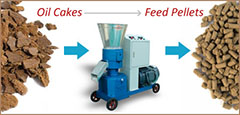



Want to set up a mini mustard oil mill of your own ? With the rapid ...
Mustards are part of the oilseed family and are regarded both as a s...
Interested in begin a small size corn oil extraction plant but dont ...
Do you want to make the edible rice bran oil at from using your mill...

